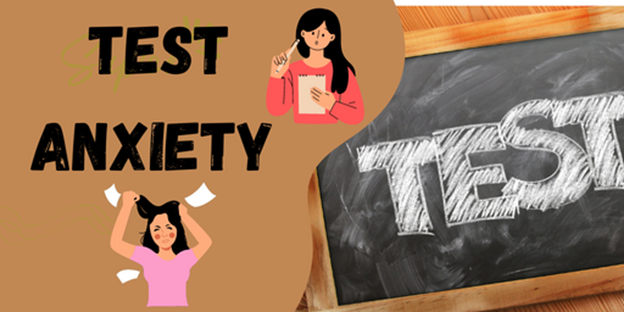Test Anxiety In Students: Test anxiety is found in test-anxious students, this anxiety may be physical, emotional, and cognitive. This is commonly due to negative feelings and thoughts often results.
What is Test Anxiety In Students
Exam anxiety, a common experience among students, involves excessive worry and stress leading up to and during exams, manifesting in physical and emotional symptoms that can hinder performance.
Teacher as a Helper for Preparation for Exam
Finally, teachers should prepare students to approach a test with helpful attitudes. Although anxiety is a common response to situations in which performance is evaluated, high levels of anxiety are likely to interfere with maximum performance (Miller et al., 2013).
Test Anxiety
Whether some students can be characterized as test-anxious is a matter of frequent debate. Test anxiety can be viewed in several ways. Students who are motivated to do well often experience increased emotional tension in response to a test. Their perceptions of the testing situation affect their thoughts during test preparation and test-taking. Students who perceive a test as a challenge usually have thoughts that are task-directed.
They can focus on completing the task and easily manage any tension that is associated with it. Some students perceive tests as threats because they have poor test-taking skills, inadequate knowledge, or both. These students often have task-irrelevant thoughts about testing. They focus on what could happen if they fail a test, and their feelings of helplessness cause them to desire to escape the situation (Brookhart & Nitko, 2019).
Test anxiety can be characterized as a trait with three components: physical, emotional, and cognitive. Test-anxiety research suggests an interaction among these components: negative thoughts and perceptions about testing can create negative feelings, which interfere with performance (Poorman, Mastorovich, Molcan, & Liberto, 2011). The physical component, or autonomic reactivity, involves unpleasant feelings and reactions such as perspiration, increased heart rate, headaches, and gastrointestinal symptoms, although not all test-anxious individuals have physical reactions.
Test Fear
The emotional component involves mood and feelings (e.g., nervousness, uneasiness, fear, dread, panic) associated with testing situations. The cognitive component refers to thoughts or concerns related to performance and its consequences, occurring before or during a test. Essentially, the cognitive component involves worry about possible negative outcomes: “catastrophic fantasies” about what might happen if the student fails, and “competitive worry” that other students are doing better (Poorman et al., 2011).
Cognitive indications of test anxiety include impaired ability to concentrate and easy distractibility during the test, difficulty recalling information (“going blank”), misreading or misunderstanding directions or test items, and feeling pressured to be perfect. In addition, individuals with true test anxiety often have a history of poor performance on tests and other evaluative situations, particularly high-stakes tests. For example, these individuals may repeatedly fail a driver’s license examination or achieve good scores on quizzes or unit tests but fail final examinations (Poorman et al., 2011).
Negative Feelings for Test
The combination of negative feelings and thoughts often results in behaviors that interfere with students’ ability to prepare adequately for a test. One of the most dangerous behaviors is avoidance procrastinating rather than beginning preparation early, and engaging in activities that seem to be related to preparing for the test but really are just distractions.
For example, students often report that they studied for many hours and still failed a test, but a record of their activities would reveal that much of that time was spent highlighting material in the textbook or “preparing to study” organizing their notes, doing household chores with the intention of minimizing interruptions, and so on. Negative thinking creates anxiety, which students try to avoid by avoiding the studying that they believe is causing the discomfort (Poorman et al., 2011).
How Resolve Student Anxiety, Fear and Feelings
Students whose test anxiety interferes with their performance often benefit from treatment that addresses the feeling or emotional component of anxiety and the negative thinking or worry aspect as well as training to improve their general test-taking skills. For example, the test-anxious student may learn techniques for stopping negative thoughts during study periods and testing situations, and behavioral techniques such as progressive relaxation and visual imagery (Poorman et al., 2011).
A more comprehensive discussion of the diagnosis and treatment of test anxiety is beyond the scope of this textbook. However, teachers may be able to identify students whose performance suggests that test anxiety may be a factor, and to work with them so that they perform at their best or refer those students for treatment. Students need to view tests and other assessment procedures as opportunities to demonstrate what they know and what they can do.
To foster this attitude, the teacher should express confidence in the students’ abilities to prepare for and perform well on an upcoming test. It may be helpful for the teacher to ask the students what would help them to feel more relaxed and less anxious before and during a test. Conducting a review session, giving practice items similar to those that will be used on the test, and not talking or interrupting students during a test are examples of strategies that are likely to reduce students’ anxiety to manageable levels (Brookhart & Nitko, 2019; Miller et al., 2013).
Read More:
https://nurseseducator.com/didactic-and-dialectic-teaching-rationale-for-team-based-learning/
https://nurseseducator.com/readability-tests-and-software-for-printed-educational-materials/
https://nurseseducator.com/high-fidelity-simulation-use-in-nursing-education/
First NCLEX Exam Center In Pakistan From Lahore (Mall of Lahore) to the Global Nursing
Categories of Journals: W, X, Y and Z Category Journal In Nursing Education
AI in Healthcare Content Creation: A Double-Edged Sword and Scary
Social Links:
https://www.facebook.com/nurseseducator/
https://www.instagram.com/nurseseducator/
